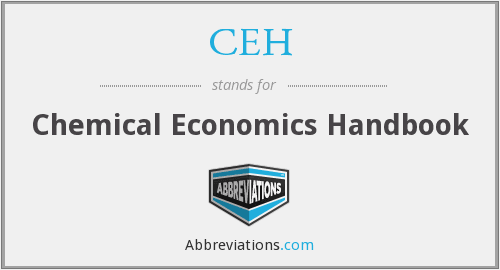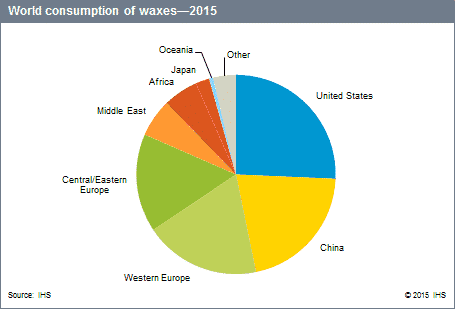خرید گزارش Waxes از Chemical Economics Handbook

خرید گزارش Chemical Economics Handbook
برای دانلود فایل Linear Alpha-Olefins مربوط به Chemical Economics Handbook و دریافت پی دی اف آلفا الفین های خطی بر روی کلید خرید در انتهای صفحه کلیک کنید. پس از اتصال به درگاه پرداخت و تکمیل مراحل خرید، لینک دانلود ایمیل می شود. این گزارش مربوط به سال 2015 و در فرمت PDF ارسال می شود.
در صورتی که نیاز به دانلود هر گزارشی از IHS و یا PEP دارید، فقط کافیست ادرس اینترنتی گزارش را از سایت ihsmarkit.com و یا https://global.ihs.com برای ما ارسال کنید (راههای ارتباطی در صفحه تماس با گیگاپیپر ). پس از بررسی، هزینه ان اعلام می شود. پس از واریز نسخه الکترونیکی ارسال می شود.
Waxes
Chemical Economics Handbook
For Download Please Contact Us :
Price : 15$
دانلود رایگان گزارش Chemical Economics Handbook
برای اطمینان از کیفیت گزارش Chemical Economics Handbook، چند صفحه ابتدایی ان بصورت رایگان قرار داده شده است.گزارشهای دیگر دانلودی از ihsmarkit.com به همین صورت هستند.
درباره گزارش Chemical Economics Handbook
The group of waxes profiled in this report is a composite of 10 of the more significant wax types commercially available today. A generally accepted definition of the term wax does not exist, primarily because of the large number of products with waxlike properties and the chemical complexity of individual wax types. Selection of the 10 wax types surveyed is based largely on commercial importance and volumes consumed.
Globally, the most-consumed wax types are petroleum waxes (categorized under mineral waxes), with about 75% of total wax consumed. This is followed by synthetic waxes such as polyolefin waxes and Fischer-Tropsch waxes, which account for about 20% of the total. The remainder of waxes consumed are vegetable and animal waxes.
The following pie chart shows world consumption of waxes:
Waxes are used in a wide variety of applications and are important contributors in many household and industrial products. Their many uses include paper coatings, candles, textile and leather products, polishes, adhesives, fruit and vegetable coatings, cosmetics, medicinals, inks, lubricants, rubber compounding, and plastics compounding. These applications cover a broad marketing spectrum from commodity-type markets, such as paper coatings, to more specialty-type markets, such as cosmetics. Waxes are typically processed and blended to meet specific performance requirements.
China is the leading petroleum wax producer and exporter in the world, and this is expected to continue. The United States, Europe, and China together accounted for about 80% of total petroleum wax consumption in 2015. Consumption growth will be driven by China, along with Central and Eastern Europe, the United States, Africa, and the Middle East. Western Europe will maintain high volumes, but will grow only moderately. Japan will experience a decline in consumption of petroleum wax over the next few years.
Growth in world consumption annually is expected to be about 2.5%, driven by China, Central and Eastern Europe, and the Middle East. The high-volume markets of the United States and Western Europe will experience moderate growth of about 2% and 1.0%, respectively. Japan will decline at a rate of about 0.3% per year.
China’s growth in the consumption of wax will rely on domestic GDP growth. Japan’s declining wax consumption has followed the decline in its manufacturing industry. Other regional growth, such as in the Middle East, will occur as a result of access to crude oil for petroleum wax, or to gas-to-liquid (GTL) technologies for synthetic wax. US and Western European growth will be limited by domestic supply.
In many regions, use of candles will continue to account for a large part of consumption. Use of waxes for candles will continue to grow at a steady rate across regions. Other consumer goods applications such as cosmetics and personal care items will also increase globally.
Consumption in packaging applications will continue to decline, as substitute materials such as plastics will be used in the United States, Europe, and Japan. In addition, the development of recyclable alternatives has increased the amount of corrugated packaging that can be recycled, and has aided the decline of wax usage. Limited petroleum wax supply in the United States and Europe, as well as food legislation in Europe, may also lead to replacement of waxes.
This report focuses on naturally occurring and synthetic waxes that are commercially significant. The discussion is divided into sections on mineral waxes (montan, ozokerite and ceresin), petroleum waxes (paraffin, microcrystalline, petrolatum and slack), synthetic waxes (polyethylene and Fischer-Tropsch), vegetable waxes (carnauba, candelilla, Japan, ouricury, jojoba and rice), and animal and insect waxes (beeswax and wool grease/lanolin). Modified naturally occurring waxes are also discussed briefly.
دانلود گزارش آلفا الفین های خطی
تعریف اصطلاح موم وجود ندارد ، در درجه اول به دلیل تعداد زیادی محصول با خاصیت موم و پیچیدگی شیمیایی انواع موم است. انتخاب 10 نوع موم مورد بررسی ، عمدتا بر اهمیت تجاری و حجم مصرفی استوار است.
در سطح جهان ، پرمصرف ترین نوع موم ها ، واکس های نفتی (طبقه بندی شده تحت واکس های معدنی) هستند که حدود 75٪ از کل موم ها مصرف می شوند. این مورد پس از واکس های مصنوعی مانند واکس های پلی الیفین و واکس های فیشر-تروپش وجود دارد که حدود 20٪ از کل را تشکیل می دهد. باقیمانده واکسهای مصرفی مومهای گیاهی و حیوانی است.
نمودار پای زیر مصرف جهانی موم ها را نشان می دهد:
مومها در طیف گسترده ای از کاربردها مورد استفاده قرار می گیرند و در بسیاری از محصولات خانگی و صنعتی نقش مهمی دارند. کاربردهای بسیاری از آنها شامل رومیزی های کاغذی ، شمع ها ، پارچه و محصولات چرمی ، جلا دادن ، چسب ، پوشش های میوه و سبزیجات ، مواد آرایشی ، دارویی ، جوهر ، روان کننده ها ، ترکیب لاستیک و ترکیب پلاستیک است. این برنامه ها طیف گسترده ای از بازاریابی را از بازارهایی از جنس کالاها ، مانند روکش های کاغذی ، گرفته تا بازارهایی با نوع خاص تر ، مانند مواد آرایشی ، پوشش می دهند. مومها معمولاً برای برآورده کردن نیازهای خاص عملکرد پردازش و آمیخته می شوند.
چین پیشرو در زمینه تولید و صادر کننده موم نفت در جهان است و انتظار می رود این روند ادامه یابد. در سال 2015 ، ایالات متحده ، اروپا و چین حدود 80٪ از کل مصرف موم نفت را تشکیل می دادند. رشد مصرف توسط چین و به همراه اروپای مرکزی و شرقی ، ایالات متحده ، آفریقا و خاورمیانه انجام می شود. اروپای غربی حجم بالایی را حفظ خواهد کرد ، اما فقط در حد متوسط رشد خواهد کرد. ژاپن طی چند سال آینده کاهش مصرف موم نفتی را تجربه خواهد کرد.
پیش بینی می شود رشد مصرف جهانی سالانه حدود 2.5٪ باشد که توسط چین ، اروپای مرکزی و شرقی و خاورمیانه رانده می شود. بازارهای پر حجم ایالات متحده و اروپای غربی به ترتیب حدود متوسط 2٪ و 1.0٪ رشد را تجربه خواهند کرد. ژاپن با نرخ حدود 0.3٪ در سال کاهش می یابد.
رشد چین در مصرف موم متکی به رشد تولید ناخالص داخلی داخلی خواهد بود. کاهش مصرف موم ژاپن به دنبال کاهش صنعت تولید این کشور بوده است. رشد منطقه ای دیگر ، مانند خاورمیانه ، در نتیجه دسترسی به نفت خام برای موم نفتی یا فن آوری های گاز به مایع (GTL) برای موم مصنوعی اتفاق می افتد. رشد ایالات متحده و اروپای غربی محدود به عرضه داخلی خواهد بود.
در بسیاری از مناطق ، استفاده از شمع ها بخش عمده ای از مصرف را به خود اختصاص می دهد. استفاده از موم ها برای شمع ها با سرعت ثابت در سراسر مناطق ادامه خواهد یافت. سایر کاربردهای کالاهای مصرفی مانند لوازم آرایشی و لوازم شخصی نیز در سطح جهان افزایش می یابد.
مصرف برنامه های بسته بندی همچنان رو به کاهش خواهد بود ، زیرا مواد جایگزین مانند پلاستیک در ایالات متحده ، اروپا و ژاپن استفاده می شود. علاوه بر این ، توسعه گزینه های قابل بازیافت ، میزان بسته بندی های راه راه قابل بازیافت را افزایش داده و به کاهش مصرف موم کمک کرده است. عرضه محدود موم نفتی در ایالات متحده و اروپا و همچنین مقررات مربوط به مواد غذایی در اروپا نیز ممکن است منجر به جایگزینی واکس ها شود.
این گزارش به مومهای طبیعی و مصنوعی که از نظر تجاری دارای اهمیت هستند تمرکز دارد. بحث به بخش هایی درباره واکس های معدنی (مونتان ، اوزوکریت و Ceresin) ، واکس های نفتی (پارافین ، میکرو کریستالی ، بنزین و اسلایک) ، واکس های مصنوعی (پلی اتیلن و فیشر-ترسپش) ، واکس های گیاهی (کارناوبا ، candelilla ، ژاپن ، گیاهان دارویی ، و غیره) تقسیم می شود. جوجوبا و برنج) و موم حیوانات و حشرات (موم زنبور عسل و گریس پشم / لانولین). واکسهای طبیعی تغییر یافته نیز مختصراً مورد بحث قرار می گیرند
Download Linear Alpha-Olefins Report
Table of Contents
SectionPage Number
Executive summary5
Summary6
Introduction10
Manufacturing processes11
Ethylene oligomerization11
Chevron Phillips Chemical’s ethylene oligomerization (Ziegler process)12
INEOS’s ethylene oligomerization (modified Ziegler process)13
Shell’s ethylene oligomerization (Shell higher olefins process—SHOP)14
Idemitsu’s ethylene oligomerization process15
Vista’s Alfene® process15
Exxon’s ethylene oligomerization process15
DuPont’s Versipol™ process15
SABIC/Linde alpha-SABLIN™ process15
Ethylene tetramerization16
Ethylene trimerization16
Ethylene dimerization16
Other alpha-olefin synthesis routes16
Sasol’s purification process16
Paraffin wax cracking17
Dehydration of alcohols17
Isomerization of internal olefins17
Metathesis of natural oils17
Supply and demand by region18
North America18
Producing companies18
Salient statistics19
Consumption20
Polyethylene comonomers22
Linear low-density polyethylene (LLDPE) resins23
High-density polyethylene (HDPE) resins24
Elastomers and plastomers25
Oxo alcohols25
Detergent alcohols25
Plasticizer alcohols27
Polyalphaolefins27
Oil field drilling fluids30
Other lubricant additives31
Linear alkylbenzene31
Surfactants32
Alkenylsuccinic anhydrides32
Synthetic fatty acids (C7-C9)33
Alkyldimethylamines and dialkylmethylamines34
Polypropylene comonomer36
Chlorinated olefins36
Linear mercaptans36
Aluminum alkyls37
Alkyldiphenylether disulfonates37
Other37
Price38
Trade38
Central and South America39
Salient statistics39
Consumption40
Western Europe41
Producing companies41
Salient statistics42
Consumption42
Polyethylene comonomers44
LLDPE/HDPE44
Plastomers and elastomers45
Polyalphaolefins45
Oxo alcohols46
Detergent oxo alcohols46
Plasticizer alcohols47
Polybutene-147
Alkenylsuccinic anhydride48
Linear alkylbenzene48
alpha-Olefin sulfonates/surfactants48
Lube oil additives48
Other49
Price49
Trade50
Central and Eastern Europe50
Producing companies50
Salient statistics51
Consumption51
Middle East52
Producing companies52
Salient statistics54
Consumption54
Africa55
Producing companies55
Salient statistics56
Consumption57
Japan57
Producing companies57
Salient statistics59
Consumption60
Polyethylene comonomers60
Oxo alcohols61
Plasticizer alcohols61
Detergent alcohols61
alpha-Olefin sulfonates62
Other62
Price62
Trade62
China64
Producing companies64
Salient statistics65
Consumption65
Polyethylene comonomers66
alpha-Olefin sulfonates67
Polyalphaolefins67
Other68
Other Asia68
Producing companies68
Salient statistics69
India69
Other Northeast Asia70
Southeast Asia70
Trade71
Other Northeast Asia71
Southeast Asia71
Bibliography72
